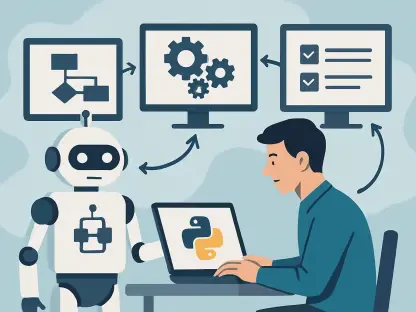The mobile app industry has experienced explosive growth over the past decade, transforming the way we live, work, and interact. As technology continues to evolve, several emerging trends are poised to have a significant impact on mobile app development in the coming years. From advancements in artificial intelligence (AI) to the rise of immersive technologies and foldable devices, let’s explore some key trends that developers should keep a close eye on.
Augmented Reality
Augmented reality is not a new concept, but the opportunities it presents to mobile solutions are growing in number and practicality, providing customers with useful real-time information and a unique way to experience products before making a purchase. According to Statista, the number of mobile augmented reality users is projected to reach 1.7 billion in 2024, a significant increase from 200 million in 2015. Moreover, a Deloitte Digital & Snap Inc report shows that 71% of shoppers would make purchases more often if AR technology was more widely used. From a business perspective, a Mindshare study reveals that products with integrated interactive AI experiences witness a twofold increase in consumer engagement, with a 94% conversion rate.
Internet of Things (IoT) Applications
The demand for IoT applications is on an upward trend, with the number of connected devices estimated to surpass 30 billion by 2025, averaging four devices per person, according to a study by IoT Analytics, a global IoT market intelligence provider. While mobile apps enable the configuration and control of IoT devices and deliver alerts and notifications, their true potential lies in real-time data collection and analytics, allowing for hyper-personalized user experiences.
Biometric Encryption and Cross-platform App Development
As mobile apps store and transmit more and more personal data, and as cyber threats continue to grow, companies are increasingly recognizing the need for integrated and complex security methods, such as biometric encryption. This approaches ensures that sensitive data can only be accessed after decryption using the device’s biometric methods (fingerprint and facial recognition), while deletion of an authentication method would result in the loss of data from the cryptographic object. Developers must prioritize the implementation of secure coding practices, encryption, biometrics, and other advanced security features. Additionally, regulations such as the General Data Protection Regulation (GDPR) and the California Consumer Privacy Act (CCPA) will continue to shape data protection standards. User trust and data security will remain critical considerations in the future of mobile app development.
The global mobile application market was valued at $206.85 billion in 2022, at a compound annual growth rate (CAGR) of 13.8% from 2023 to 2030. Cross-platform app development has emerged as another significant trend in recent years due to cost and time efficiency. By being compatible with Android, iOS, and web, and using a single source code, cross-platform apps streamline the testing process and decrease development time.
Foldable Devices
Another trend worth watching is the foldable device market, which is expected to reach 27.6 million devices by 2025, according to an IDC study. Users of these devices often encounter challenges accessing and using mobile apps because they are not adapted for widescreen displays. In some cases, apps may even close when switching between viewing modes. Companies will need to focus on optimizing mobile apps for foldable devices, ensuring they operate in both modes on standard and foldable screens. A folded screen should provide useful information simply and intuitively, while the unfolded screen must display all the content.
The 5G Network Revolution
The advent of 5G networks promises lightning-fast internet speeds and low latency, paving the way for innovative mobile app capabilities. Developers will have the opportunity to leverage the increased bandwidth and reduced latency of 5G to create richer, real-time experiences. Mobile apps will be able to handle more data-intensive tasks, including high-quality video streaming, cloud-based gaming, and seamless IoT connectivity. As 5G networks become more prevalent, mobile app development will need to adapt to fully use the transformative potential of this technology.
Conclusion
As technology evolves at a rapid pace, the mobile app development landscape will continue to witness exciting advancements. From the integration of AI and IoT to the immersive experiences offered by AR and VR, developers must stay attuned to these emerging trends. Furthermore, the advent of 5G and the increasing emphasis on security and privacy will drive innovation and shape the future of mobile app development. By embracing these trends and adapting their skills and strategies, developers can create transformative mobile experiences that cater to the evolving needs and expectations of users in the years to come.









